Black pines can reach the height of 40 m, but rarely achieves this. The needles are in fascicles of two with a white sheath at the base, 7 – 12 cm long; female cones are 4 – 7 cm in length, scaled, with small points on the tips of the scales, taking two years to mature. Bark is grey on young trees and small branches, becoming black and plated on larger branches and the trunk.

A young tree still bushy with many branches

A mature tree on a natural mountain side
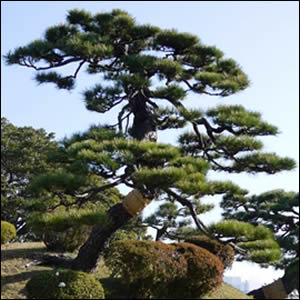
A tree trained not as a bonsai but a
“natural tree” in a Japanese park
As one of the 110 species included in the Pinus genus, the Japanese Black Pine bonsai tree is known by the scientific name of Pinus thunbergii. This beautiful plant is characterized by delicate needle-like green leaves that always grow together in pairs. If they grow in semi-shady conditions the foliage is a strong green; if however they are exposed to full sun they change to a lighter olive green colour.
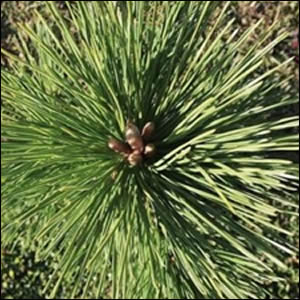
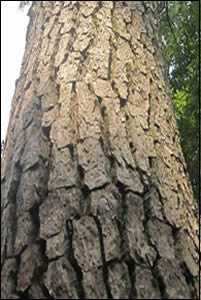
During springtime, the Japanese Black Pine will produce small reddish flowers. Later, it will also grow small brown cones. This hardy species can tolerate very strong winds and ocean spray. In Japan, the Japanese Black Pine has been one of the most popular plants to use in architecture.
If you are looking for a bonsai tree with striking appearance then the Japanese Black Pine may be your choice it has an irregularly-shaped grey bark that changes to a darker colour as the tree matures.
Specific care for Blackpine bonsai:Japanese Black Pine trees thrive in full sun, but roots are susceptible to burning in bonsai containers; in a container they should be protected from full sun. The colour of the leaves are a lighter green when the tree is grown in sunny locations, but they are a lush, deep green when the tree is grown in part or full-shade.
Wiring is preferably done during late winter when the sap is down and growth is not strong. Sap leakage will occur if wiring is carried out at any other time
.Japanese Black Pine bonsai trees are susceptible to attack by spider mites, but this usually only happens to trees that are not in good health. It is wise to inspect the tree on a weekly basis. The mites appear as specks of red on the needles of the tree.
When work is done on black pine the trees must be very healthy. If not the results will be disastrous. On a healthy tree, needles will be sharp at their tips and stiff. The needles should be uniformly dark green and have a shiny surface. In the spring new candle growth on a healthy tree will be at least an inch long. Weak growth is characterized by little or no elongation of the candle, with needles emerging very near to the base of the bud. Black Pines that are perpetually kept weak will sometimes put out small buds in the interior of the branches that do not produce needles for many years.
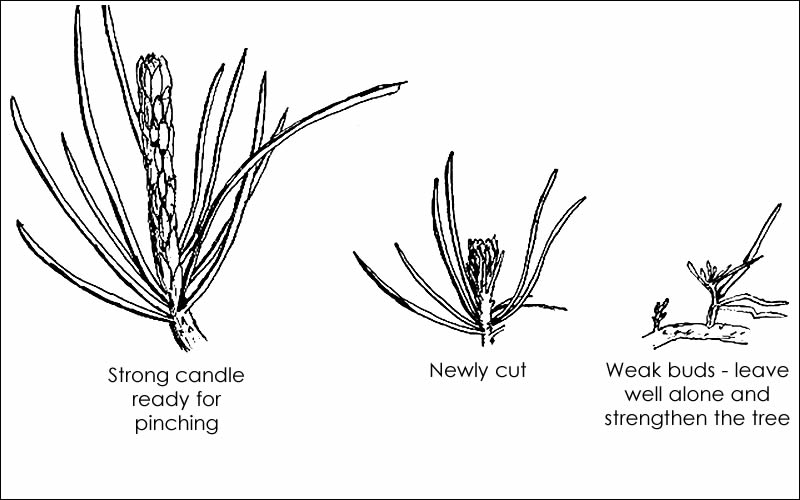
A method used to equalizing the strength of the growth of the tree is to leave stubs of the original candle on sections that are stronger. The presence of this small bit of the original candle inhibits the growth of new buds from the base. By carefully leaving differing amounts on different sections of the tree, you can give the weaker sections an advantage. On the lower section, cut the candles flush with the base; in the middle section leave a length equal to the width of the base and on the upper section leave about 1/2 inch of candle. Remove all the candles at the same time if using this technique. Monitor the buds on individual branches and remove the stub if some of the branches are weaker than expected.
Since removal of candles causes stress to the tree, remember that the tree must be very healthy and showing vigorous growth
After cutting, feeding should be stopped for at least a month. New buds should appear 10 to 12 days after de-candling. They will be very tiny and difficult to see.
Interior buds – healthy trees will have small buds emerging on the branches closer to the trunk than the tips. If there is no interior growth and the tree has long branches it is not healthy and has been neglected. Given improper care the interior and lower branching will die first and then the tree will start to thin out.
On a black pine there is a ring of dormant buds at the node and there are dormant buds at the base of each pair of needles. When de-candling if you cut back to 1/8″ in front of the node, you get a normal de-candling reaction with adventitious buds sprouting from the node. De-candling behind the node should result in more compact growth due to the development of more needle buds.
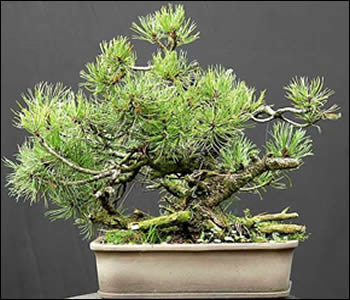
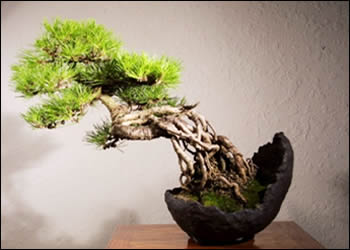
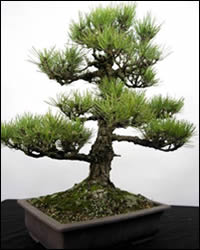
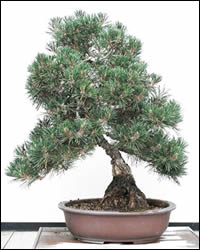
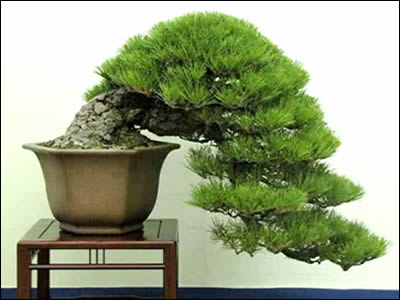

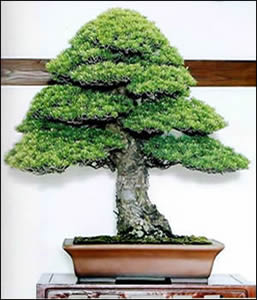
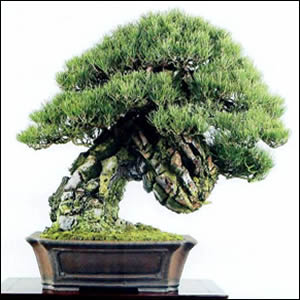
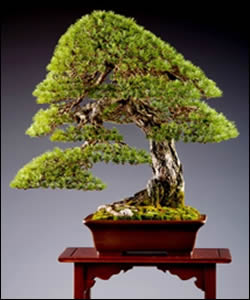
Web design: nysys